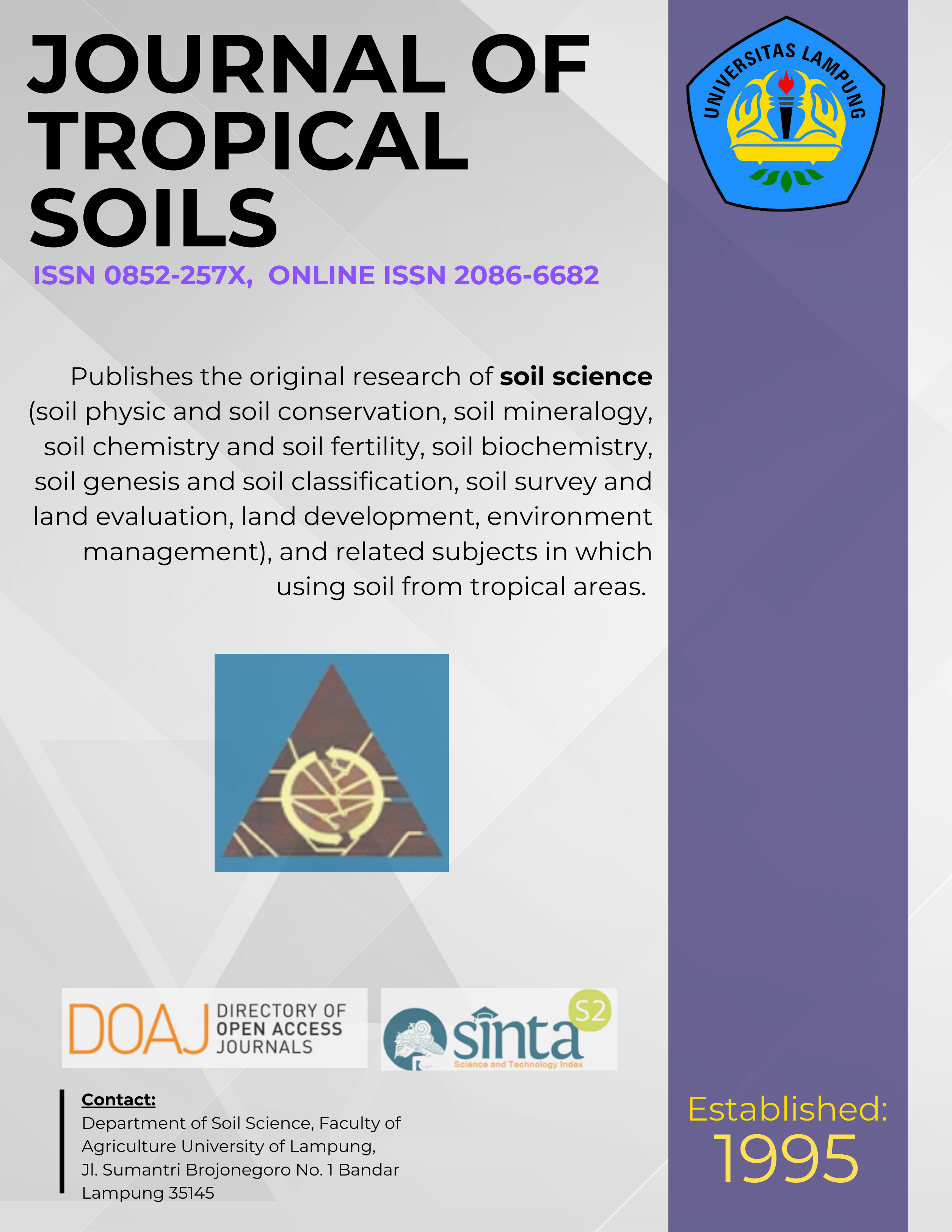Identification and Decomposition of Five Dominant Wild plants from Acid Swampland in South Sumatra
Main Article Content
Abstract
There were five emergence plants in swampland such as Polygonum barbatum, Neptunia prostrata, Phragmites karka, Ludwigia adscendens and Phragmites communis, which might be used for compost source, all the plants were easily adapted and grew very well on acid soil. These plants were choosen because of abudancy and size. All plants were identified, collected, chopped and weighted then put in a 50 liters plastic drum for decomposting during 12 weeks. Composts temperature were monitored every week, nutrients content (N, P, K, Ca, Mg, Na) and compost chemical properties (C-organic, C.E.C., C/N ratio) were analysed every two weeks. Results showed that each compost from different plant varied in nutrients content and chemical properties. Compost made of Neptunia prostata Lam. contained highest nutrients than others, it’s nutrients were N (4%), P (1675 mg kg-1), K (5.6 %), Ca (0.32 %), Mg (0.32 %) and Na (0.12 %) and the lowest nutrients content showed by compost of Phragmites karka Retz. in which N (2.4 %), P (1160 mg kg-1), K (2.62 %), Ca (0.04 %), Mg (0.07 %), and Na (0.03 %). It seem broadleaf plants tended to have higher nutrients content than grasses or graminae. Neptunia prostrata compost had a high N content due to it’s leguminosae plant. Al and Fe were low in all composts, therefore all plants were recommended for organic nutrient sources.
[How to Cite: Siti MB, A Wijaya, EP Sagala and SNA Fitri. 2015. Identification and Decomposition of Five Dominant Wild plants from Acid Swampland in South Sumatra. J Trop Soils 20: 149-155. Doi: 10.5400/jts.2015.20.3.149]
Downloads
Article Details
License for Authors
Authors who publish with this journal agree to the following terms:
- Authors retain copyright and grant the journal right of first publication with the work simultaneously licensed under a Creative Commons Attribution License that allows others to share the work with an acknowledgement of the work's authorship and initial publication in this journal.
- Authors are able to enter into separate, additional contractual arrangements for the non-exclusive distribution of the journal's published version of the work (e.g., post it to an institutional repository or publish it in a book), with an acknowledgement of its initial publication in this journal.
- Authors are permitted and encouraged to post their work online (e.g., in institutional repositories or on their website) prior to and during the submission process, as it can lead to productive exchanges, as well as earlier and greater citation of published work (See The Effect of Open Access).
License for Regular Users
Other regular users who want to cite, distribute, remix, tweak, and build upon author’s works, even for commercial purposes, should acknowledge the work’s authorship and initial publication in this journal, licensed under a Creative Commons Attribution License.

